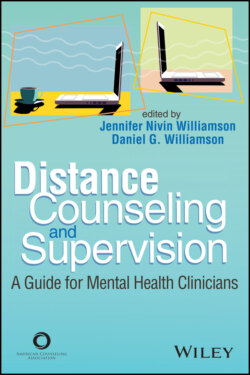Читать книгу Distance Counseling and Supervision - Группа авторов - Страница 23
Texting
ОглавлениеThe security of the texting platform is another aspect to consider, as many texting applications and services are not considered secure and others might be accessible from several access points. Text messaging in the therapeutic process is one of the more controversial modes of communication. Wade (2015) stated, “It may or may not be a good idea, and there are a number of considerations that can determine the answer” (p. 11). Counselors should identify whether clients are comfortable with the use of text, recognize and communicate the limitations of text messaging, and take precautions to ensure that they are texting with clients by using a code word or some form of identity verification. Counselors should consider whether they are comfortable with texting as a therapeutic process, whether they can successfully maintain appropriate therapeutic boundaries with clients, and whether texting is in the client’s best interest. Texting can be used in direct or indirect service delivery (AMFTRB, 2016). Counselors who support the use of texting with clients might argue that asynchronous communication has the potential to allow deeper reflection in the counseling process by both counselor and client, as well as greater availability (Harris & Birnbaum, 2015; Richards & Vigano, 2013). Other therapists might find it useful to limit texting to scheduling and communicating about appointments (i.e., “I’m running 10 minutes late,” “I have a flat tire”). Many do not support client-therapist texting, as content and urgency can get lost in translation.
Whatever decisions counselors make considering texting with clients, it is imperative that they clearly articulate the policies in the informed consent outlining boundaries for appropriate use and response time for text messaging. Documentation should be included in the client file as outlined by state and local statutes. Limits and potential risks to confidentiality should be explored with clients, who should be allowed to make informed choices.
